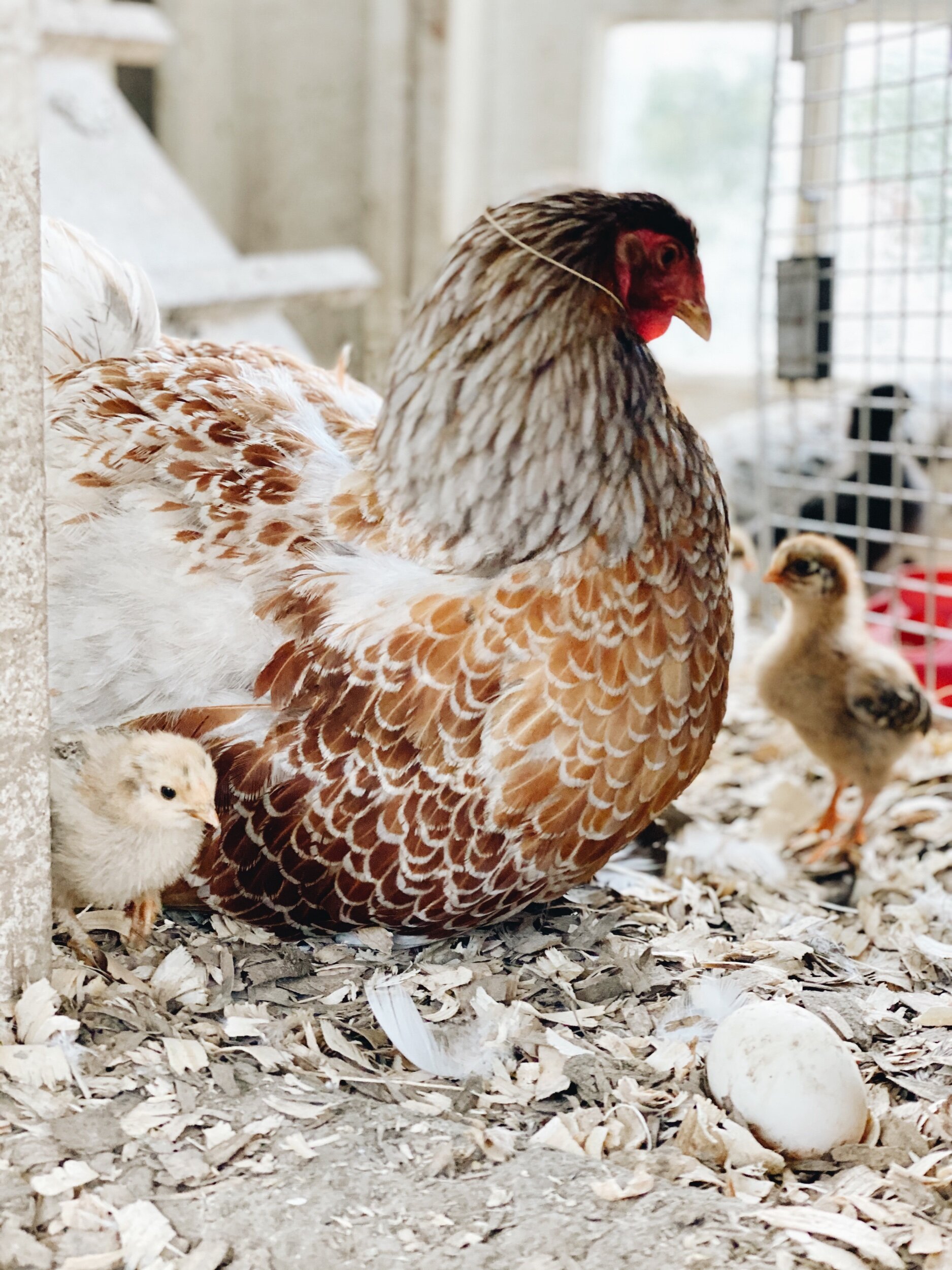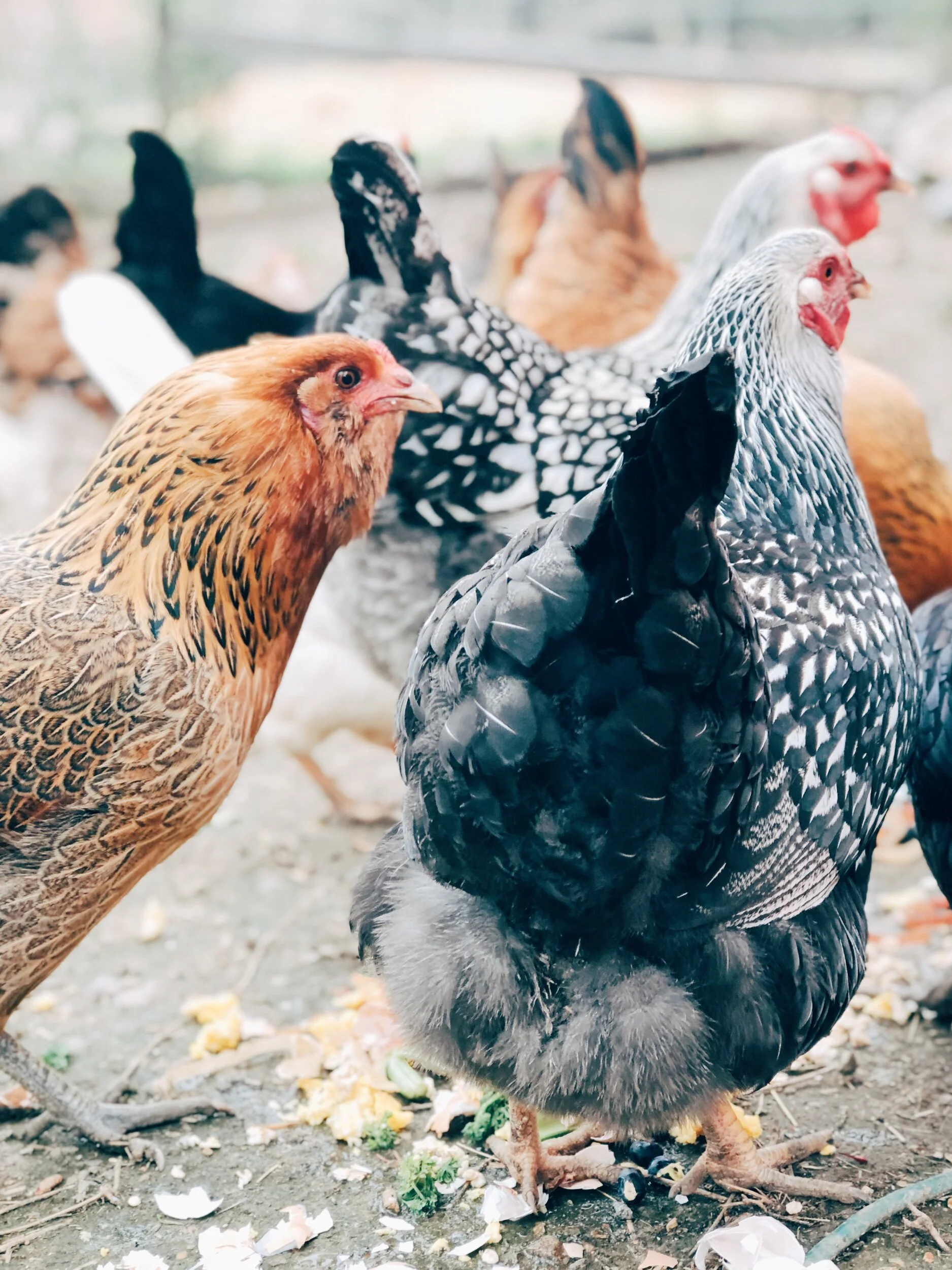How to integrate new chicks with your existing flock
When it comes time to transition new chicks to your existing flock there are a few things that will help the process go smoothly! Read on to learn more
Integrating new chicks to our existing flock can be a bit stressful but it does not have to be! Here are a few tips to help the transition go smoothly! I am NO expert. This is just what has worked for me!
TIP #1
HAVE A SEPARATE COOP/RUN
Have a separate coop and run ( usually a much smaller one) that you can place your chicks in close to your other flock but not where they’re actually roaming around together. By putting them near each other they are able to acclimate to their new surrounding and “know” other chickens are around without having to run around together. This helps everyone “ meet” in a controlled setting if you will.
Do this for a about 10 days or so! If you have a large fun and are able to put a smaller coop and run inside that would be idea! Then they are in there but still with space between them. The smaller coop I have is similar to the one pictured below! It has worked great and I now keep it permanently in their run. The ducks like to sleep in it and it’s a nice “other place” to hang out.
I usually wait to put my new chicks outside until they are about 6 weeks old and fully feathered. When that time comes they should be ready to do this process. If you wait about 10 days to two weeks the chicks will be 8 weeks old and ready to mingle!
A new coop and run can be expensive so if you have any other kind of fenced in area or crate that’s open enough to view each other this will work well. You’ll need to make sure you can still keep food and water though!
HOW TO ADD NEW LAYING HENS TO EXISTING FLOCK
NOTE: this method of introduction can also be applied when bringing new grown hens to your flock. The only thing I would do differently then is to first quarantine your new flock in a separate coop AWAY from your existing flock at first to ensure there are no diseases or issues with them before integrating the with your flock. Once two weeks have passed you can now move them near your flock so they can see each other. Wait about 2 weeks again before putting them all together. This means about a month long process when introducing older hens to an established flock. It’s a hassle but worth ensuring there are no diseases or issues.
What health issues to look for?
Signs of lice or mites.
Dull/ shrivelled comb.
Blocked nostrils/ fluid coming from their eyes.
Scaly legs.
If any of these health issues appear treat them BEFORE you introduce the new chickens to your existing flock.
TIP #2
INTRODUCE AT NIGHT
When it comes time to introduce them all together I have found doing it at night really helps! When all the hens are asleep you can just grab the chicks and place them in their new coop. This will give them a bit more time to familiarize themselves before morning comes and the excitement ensues.
I’ve done the introductions at night and during the day at at night has always been best! If you are going to do it during the day maybe let them all free range together and monitor.
I however like for my new chicks to learn where home is so sometimes I keep them all together for 24 hours so they can get to know each other. Know that there might be lots of excitement the next morning when they are all together. When introducing them it’s good to have distractions available.
Add Cabbage for them to peck at
Add fresh pine flakes to move around
Give LOTS of treats!
TIP #3
HAVE AN EXTRA FEEDER AND WATERER
Now that you’ve introduced everyone and they’re together it’s good to have a separate feeder and waterer if possible to ensure everyone has access to food and water without being pecked on.
The older chickens can pick on the smaller ones to be sure that your little ones can get to food and water. By having a separate station this decreases competition significantly. Your little ones should still be getting a grower crumble at this point too so that’s a way for them to get a different kind of feed without everyone crowding around the same feeder.
TIP #4
PATIENCE
All this takes time. They WILL argue at times and maybe even peck at each other. They have to establish their pecking order. Let them do their thing. Unless someone is really getting injured. If that’s the case separate the ones with the issue and give it more time. This process of re-adjusting will probably take about a week or 10 days. After that they should get along at least for the most part.
Chickens are such wonderful animals and they can really be a joy! I hope this has helped you learn some and you can soon integrate your flocks with no problem at all! Feel free to reach out with any questions!
IF you are wanting more information on chickens I have a course available that gives all the ins and outs of chickens!
PIN FOR LATER
Thank you SO much for following along! If you want more blog posts on chickens take a look at these below!
Baby Chicks 101
Thank you always for your support!
Hugs,
Annette











